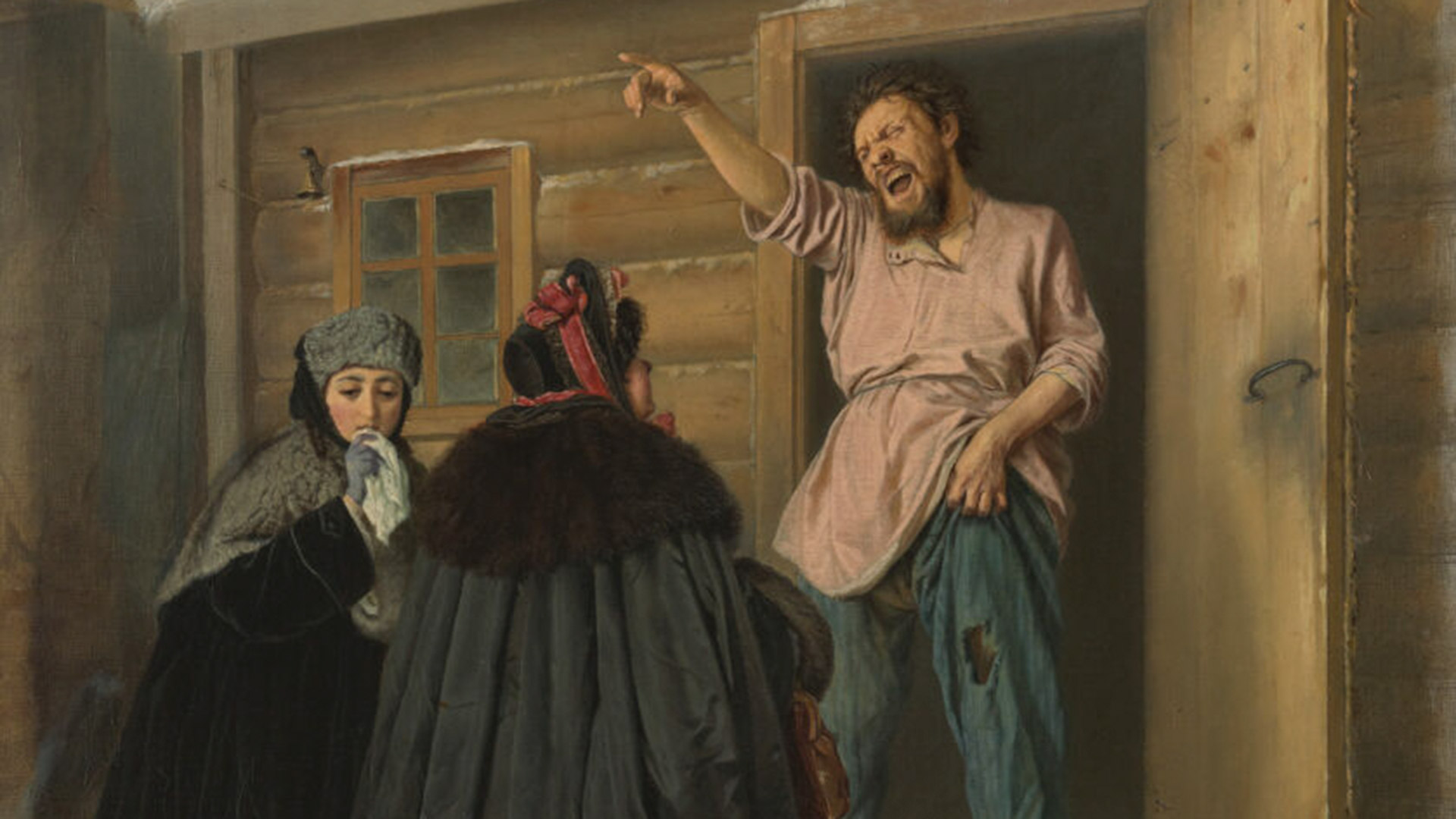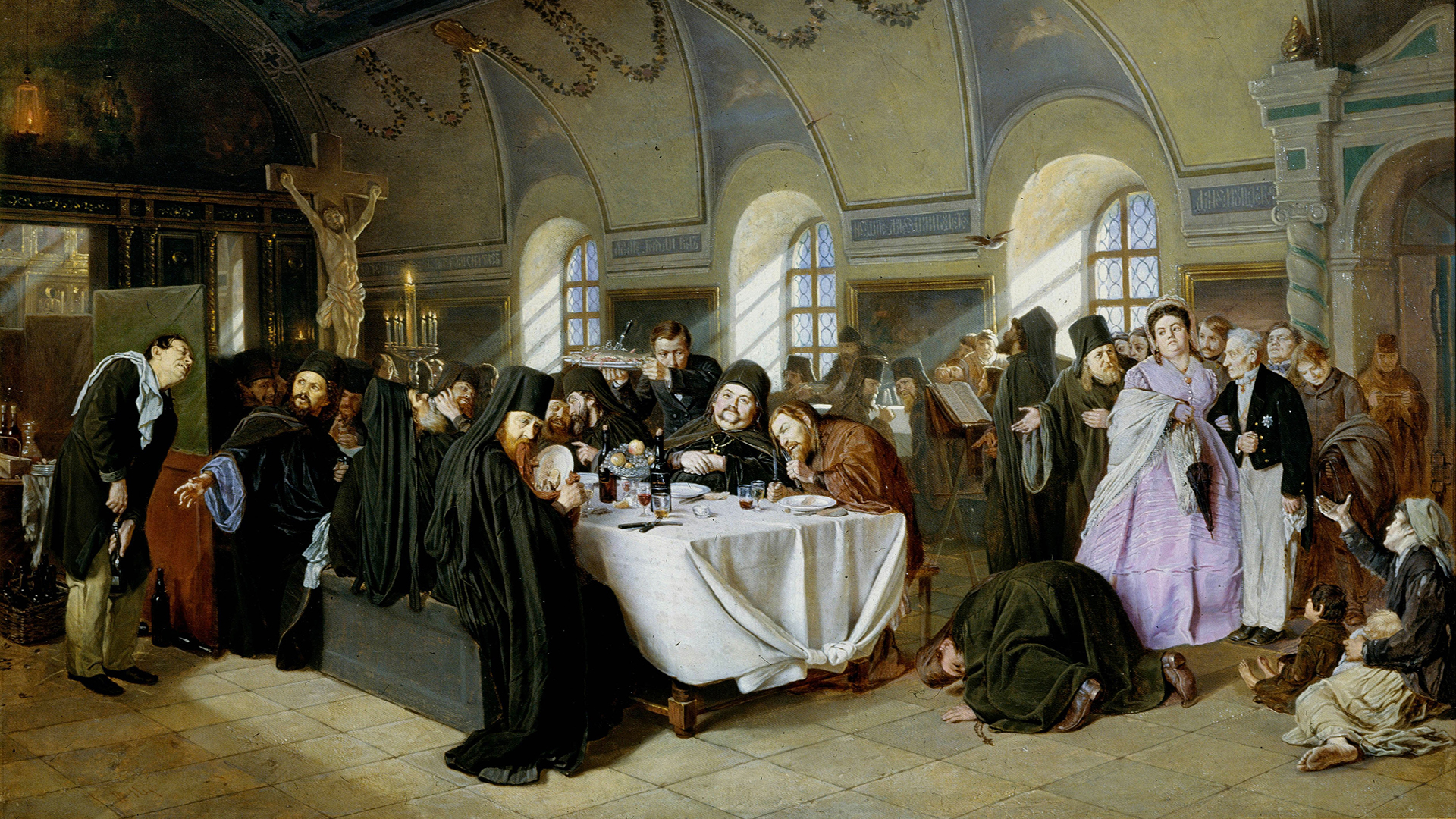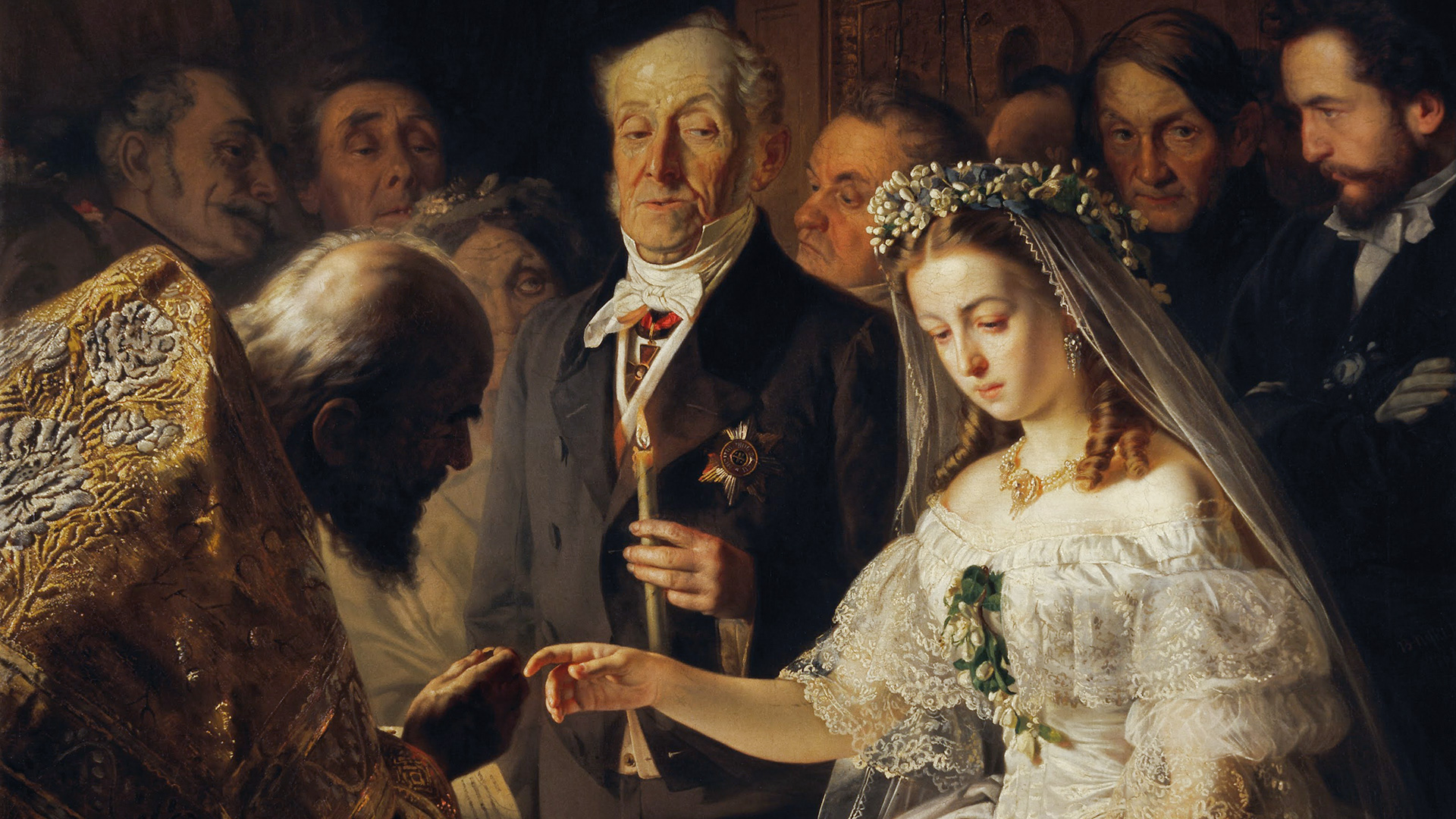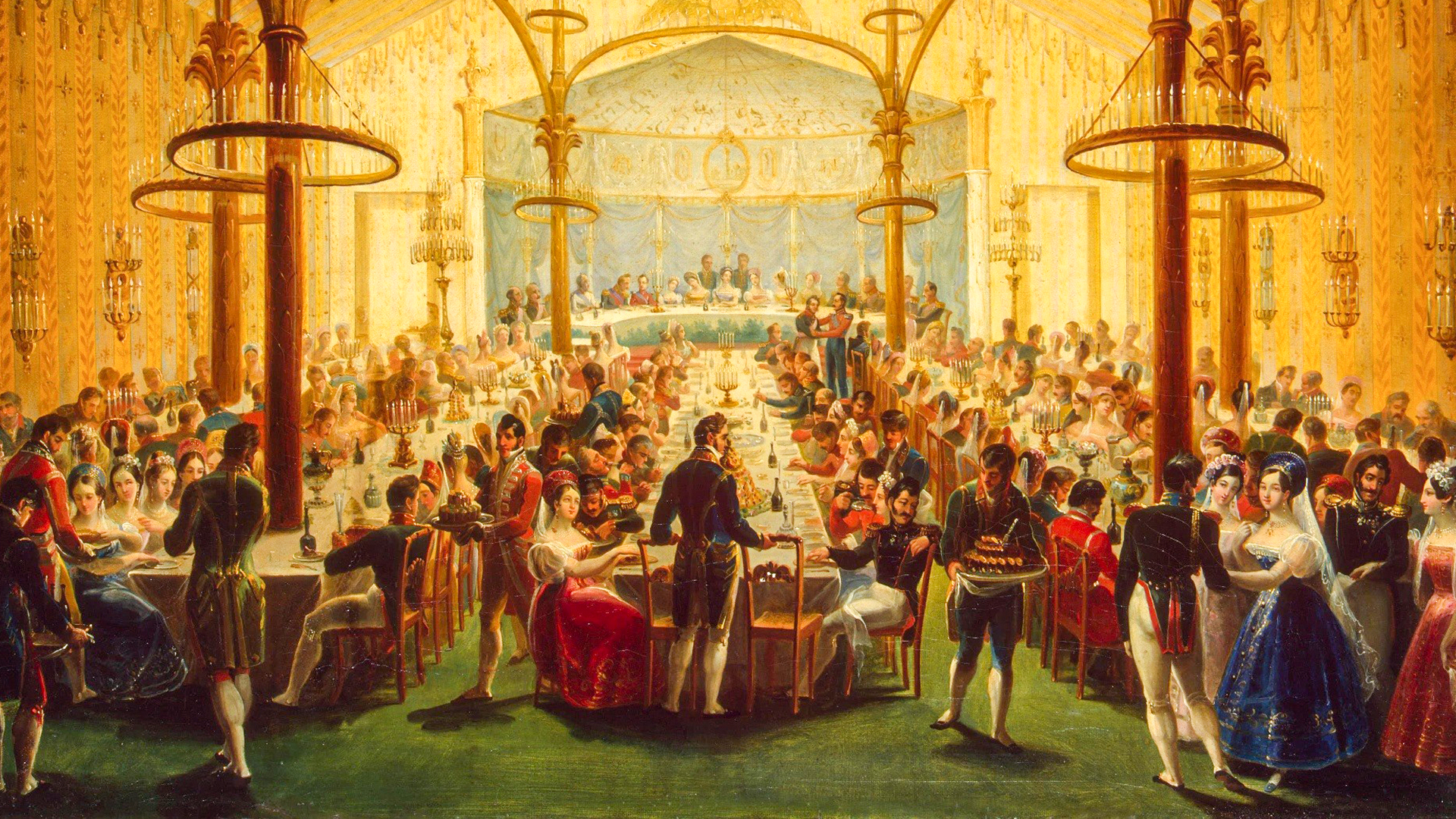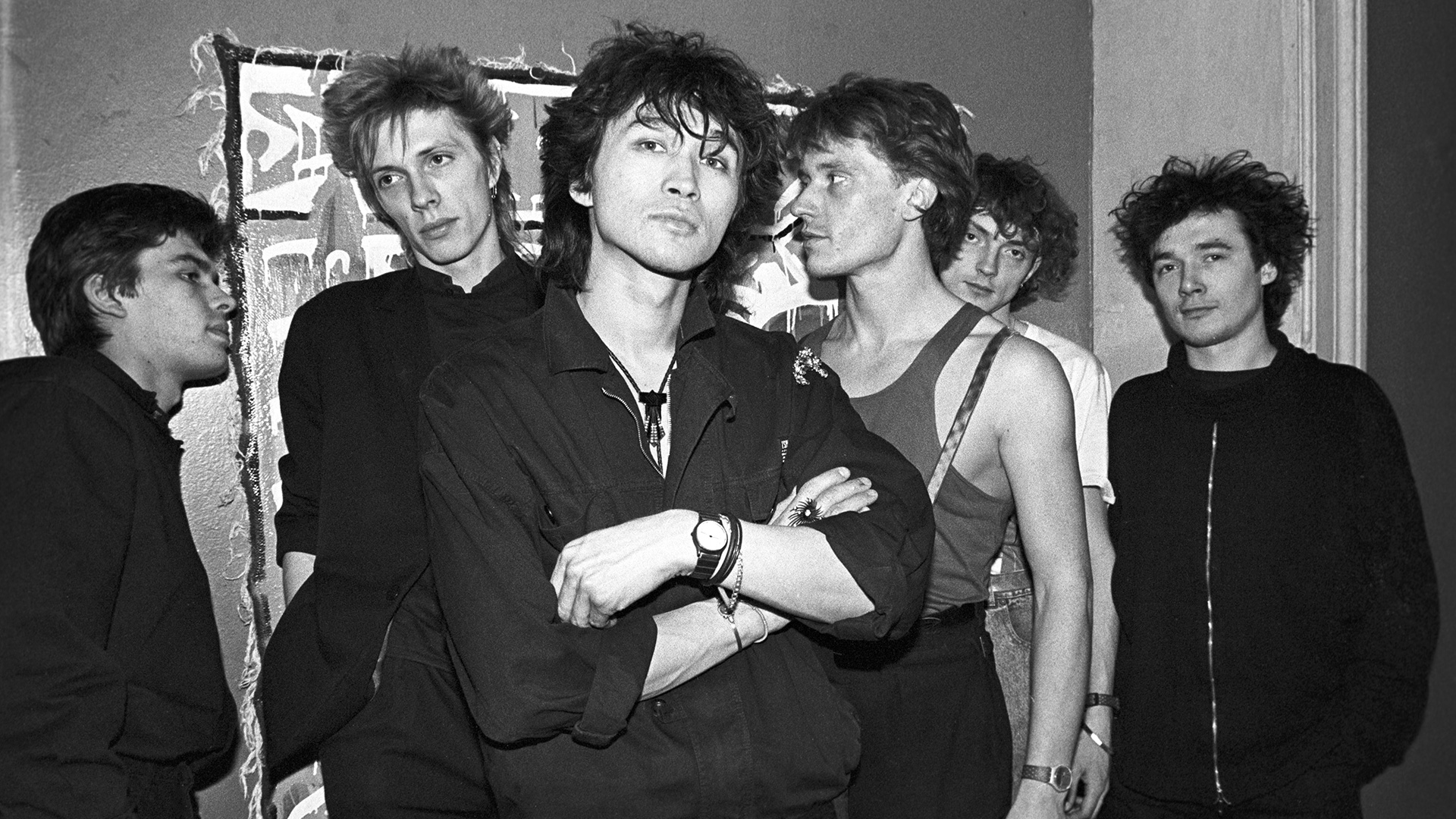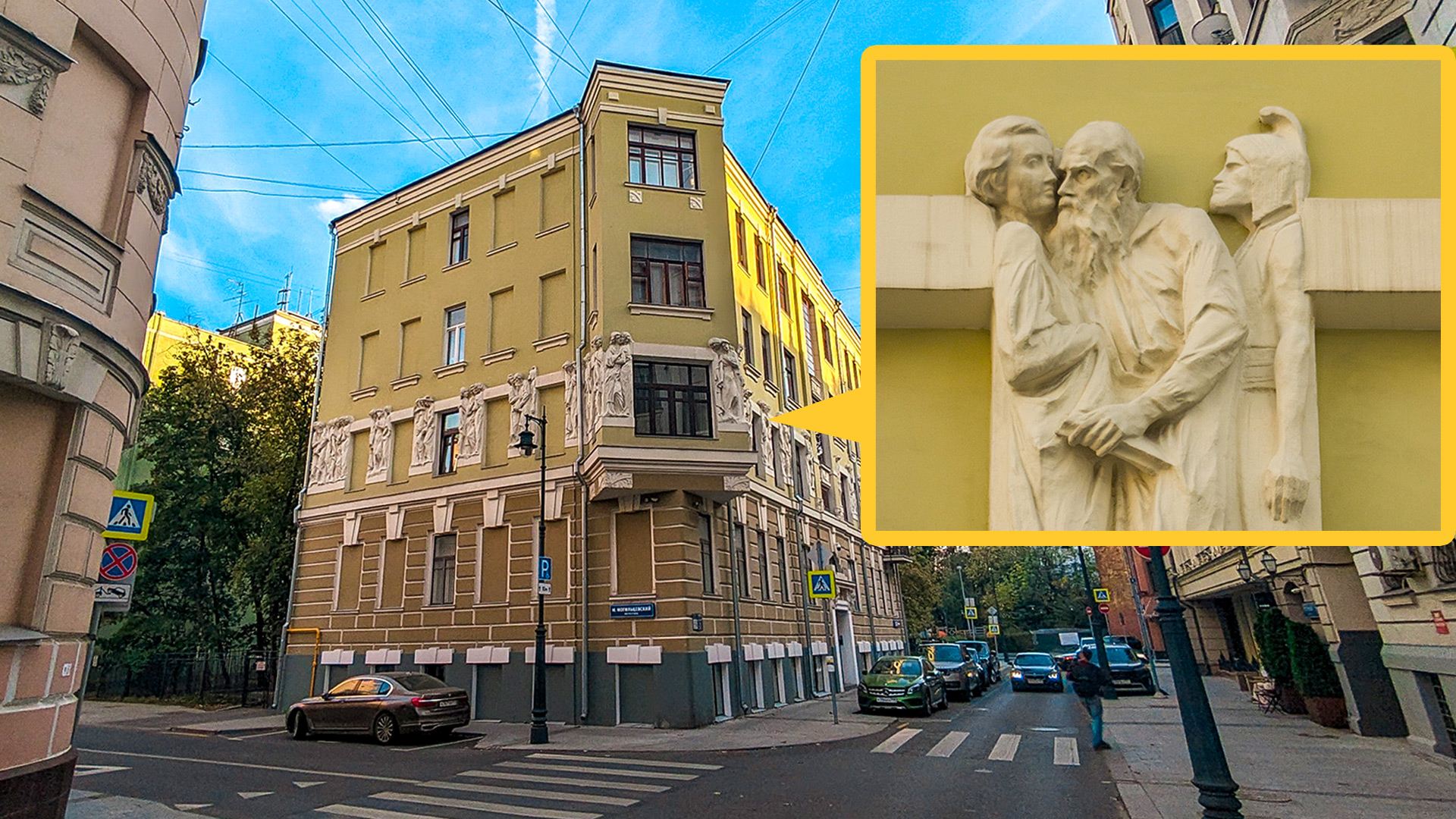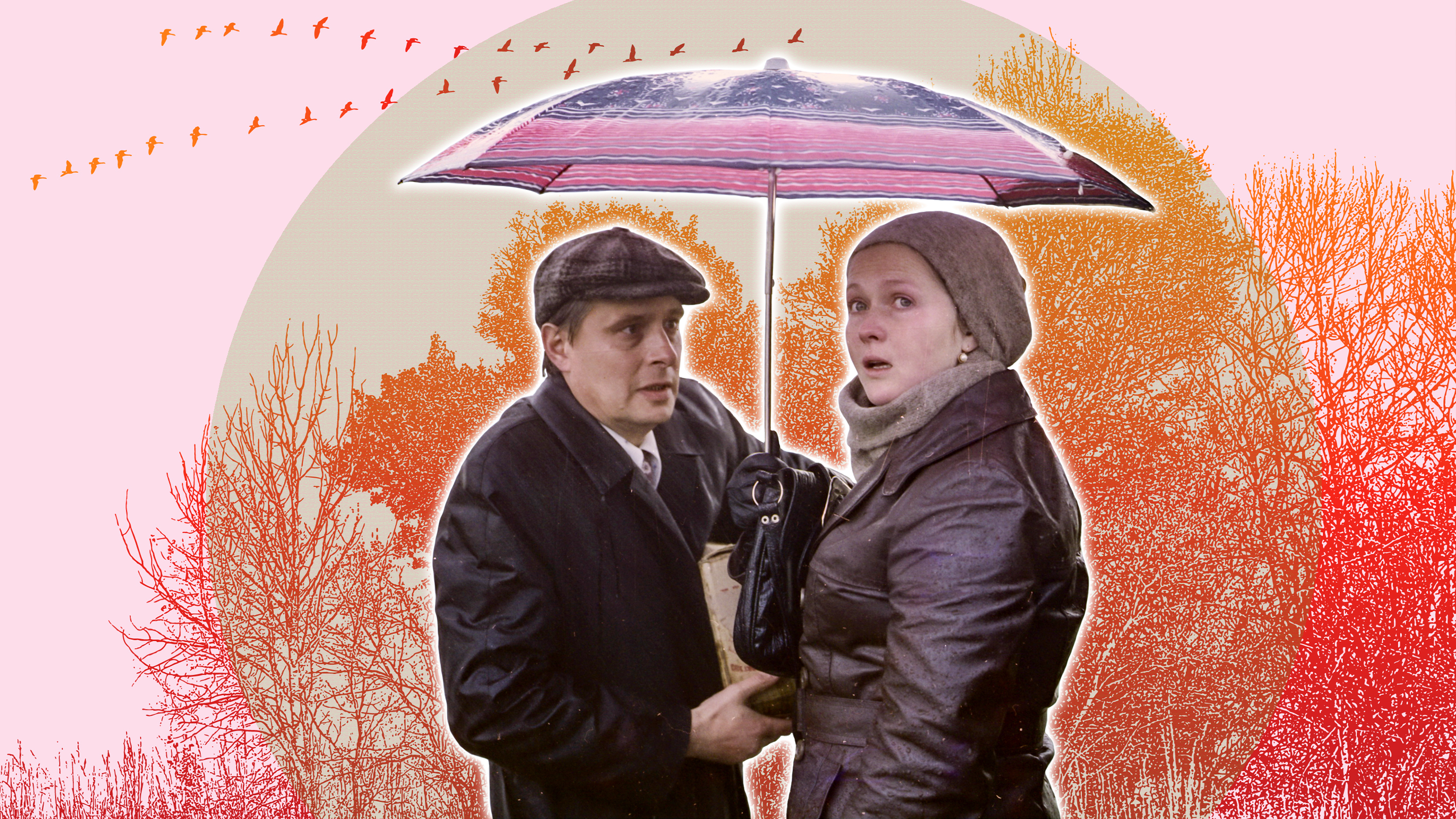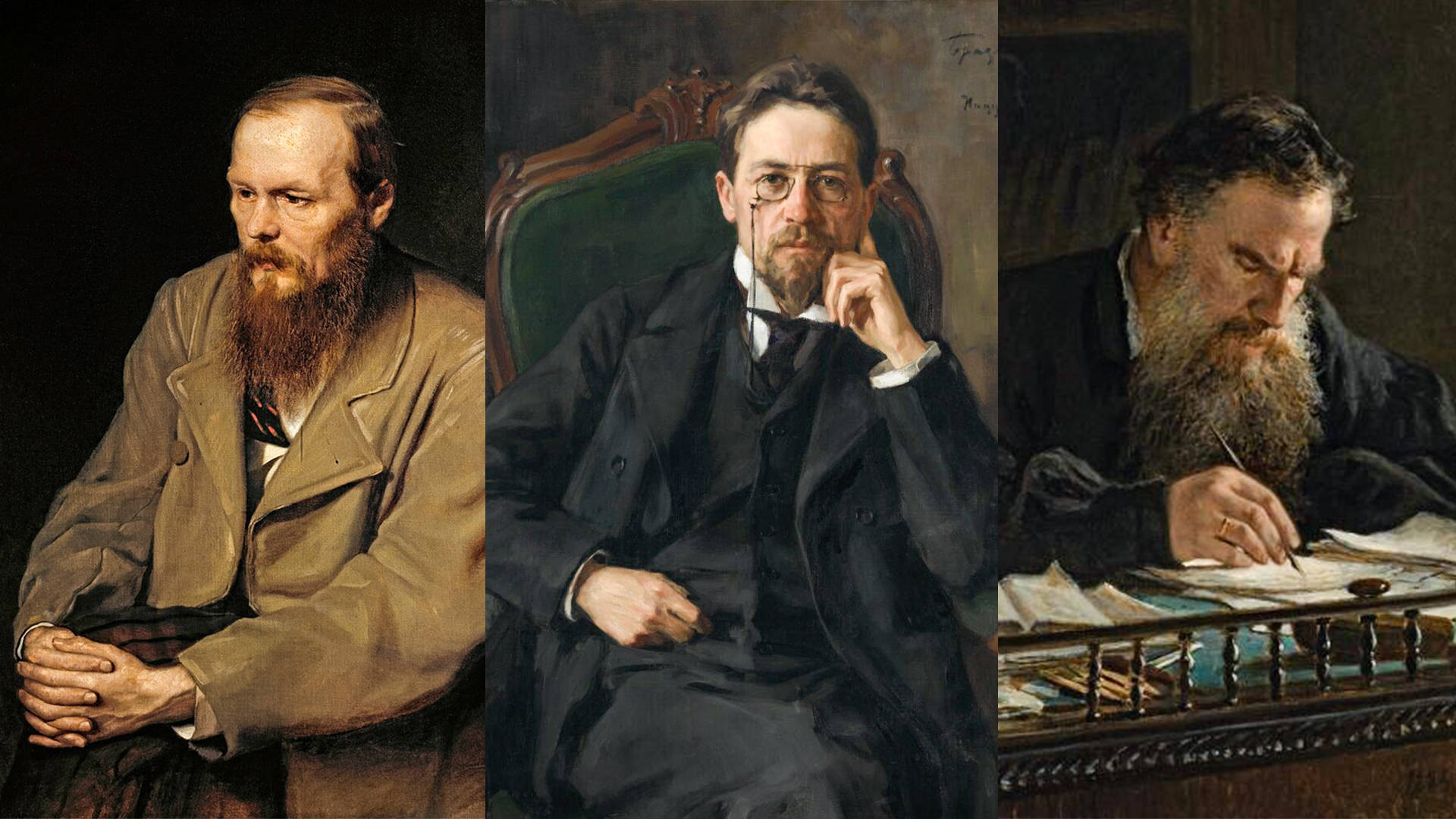
What’s going on in the painting ‘Father-in-law’ by Vladimir Makovsky?

The father-in-law stands quite close to his daughter-in-law, putting his right hand on her waist. But, this closeness is clearly unpleasant for the young woman. Her face expresses confusion and annoyance. Although, it’s clear that she is spoiled in this family. Despite the modest setting, she is wearing an elegant sarafan, an elaborate headdress, earrings and several rows of beads around her neck.

A young man is entering the house at that moment and becomes a witness to this scene. It’s the peasant woman's husband, her father-in-law's son. Judging by his clothes and knapsack, he is returning home after a long absence. And he clearly guesses what was going on between his wife and his father.
Artist Vladimir Makovsky was a member of the Itinerants and, like other artists in the group, he was distinguished by his close attention to reality. The Itinerants did not strive to depict life more beautifully than it was. On the contrary, they highlighted its terrible and unsightly sides. One of these paintings was the canvas ‘Svekor’ (‘Father-in-law’), painted in 1888. Its plot reflects the tradition of "daughter-in-law", that is, the cohabitation of a father-in-law with his son's wife, which was practiced in some peasant families in Russia until the end of the 19th century.

What created the prerequisites for a daughter-in-law?
- The age of the husband. Many peasant marriages in the 19th century were concluded not for love, but by agreement between families. But, sometimes, the husband was significantly younger than his wife and, sometimes, was even a child. Then, the role of the de facto husband of the newlywed could be taken by the father-in-law.
- Military service. In the 19th century, compulsory military service lasted 20-25 years. Most often, single men were recruited, but, sometimes, married men were recruited, as well. A wife with children had the right to follow her husband, but, sometimes, she preferred to stay at home. Especially if there were not enough adult young workers at home.
- ‘Otkhozhiy promysel’ (Seasonal work). This was the work of peasants in the Russian Empire done outside their permanent place of residence. Peasants would leave their villages or towns to earn money. In the 19th century, they were called ‘otkhodniki’ (in essence ‘migrant workers’), now they would be called ‘vakhtovniki’ (‘shift workers’).
But, even the presence of an adult husband in the house did not mean that the father-in-law could not have an eye on the daughter-in-law. And the daughter-in-law, being in a dependent position, could not always refuse the head of the family. This is what Vladimir Makovsky's painting ‘Father-in-law’ is telling us.


